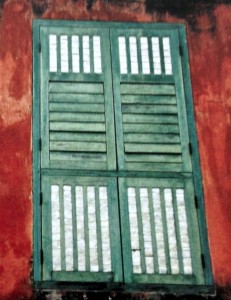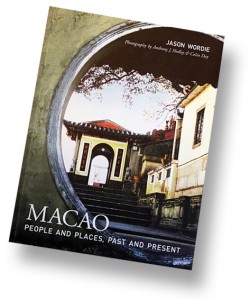02 Oct 2015: Macao—People and Places, Past and Present November 9, 2015 – Posted in: Newsletters
Macao: People & Places, Past & Present evokes the city in all its richness and diversity. Full of fascinating details, unexpected anecdotes and superb photography, even those who thought they knew Macao will learn a great deal.—Sir Roger Lobo (1923-2015), Vision 2047 Foundation
Macao: People and Places, Past and Present isn’t your typical travel guide to a popular tourist destination. Neither is it a plodding and academic historical chronicle. Yes, there are plenty of lush and lovely photographs, interesting maps and eloquent, well-researched essays within its weighty 447 pages. What sets it apart from other broadly similar books, however, is the author’s passionate intention to produce a tome written for a specific audience in mind—the keen-eyed observer who seeks to find something beyond a two-dimensional ‘touristy’ perspective. The fine balance struck by author Jason Wordie, between readability, aesthetics and research, has produced a book that is worthy of Macao’s beauty and heritage, taking it beyond the simplistic and detached “East-meets-West”, “Portugal in China” monikers. Macao is obviously a place that has found a permanent place in the writer’s heart, ever since he first stepped foot into it at the tender age of 21.
“Macao’s people are possibly the past’s most interesting and diverse legacy,” says Jason. “Immigrant groups from places as widely-scattered as Portugal, Malacca, Goa, Japan, the Moluccas and Timor have evolved, over the centuries, into the Macanese, one of China’s smallest, most unlikely and, in today’s fragmented, globalised world—most fundamentally threatened—ethnic minorities. Whilst many contemporary Macanese are products of these specific personal circumstances—in particular those born in the last two or three generations—a great many more are not.”

Window panes made from capiz (mother-of-pearl shells) at Tap Seac
All of Macao is encapsulated in the pages of Macao: People and Places, Past and Present—the culinary traditions, the victuals and grog, the natural beauty, the buildings and of course the people. The photographs of Macao’s architecture—houses of worship, cemeteries, residential and government buildings, forts, gardens and libraries—appear courtesy of Anthony J. Hedley and Colin Day. The informative and witty maps were drawn by Wee Kek Koon. Portuguese and Chinese names and words are cited in their original forms with English translations.
About the author: Jason Wordie is an established Hong Kong historian and writer. A history graduate of Hong Kong University who is, according to a fellow writer, blessed with a ‘phenomenal memory’, Jason swiftly established a reputation for popular historical walks, which he conducted in various parts of Hong Kong, Macao and Canton. Jason also contributes regularly to the South China Morning Post. A keen gardener and recreational hiker, he has made his home in the New Territories for over 25 years.

